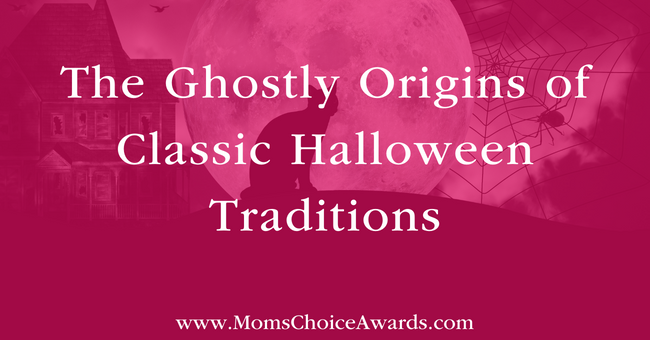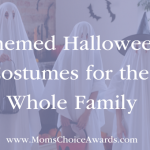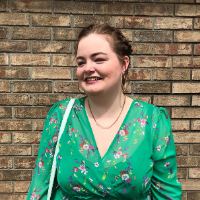 Draven Jackson
Draven Jackson
Blogger | Teacher
Twitter
Anyone who knows me is well aware of how much I love Halloween. I love pumpkins and costumes and trick-or-treating and all the other fun, ghostly Halloween traditions that make up this spooky holiday.
But where and when did these traditions start? Why are the Halloween colors black and orange and who was the first person to popularize candy corn as the staple holiday treat? If you have ever wondered or asked yourself these questions, here are some fun and bewitching facts about the origins of all your favorite Halloween traditions!
Carving Pumpkins
One of the most popular Halloween traditions, carving pumpkins began in Ireland with a different type of vegetable – the turnip! Carving pumpkins (or turnips) originated from a legend about a man named Stingy Jack who managed to trap the Devil and only freed him under the condition that he would never have to go to Hell.
However, when he died, Jack realized that Heaven also didn’t want his soul, so he was forced to walk the Earth as a ghost for all eternity. The Devil gave Jack a carved turnip filled with burning coal to light his way.
Those who heard the story of Jack began to carve frightening faces into their own gourds and pumpkins as a way of warding off bad spirits.
Wearing Costumes
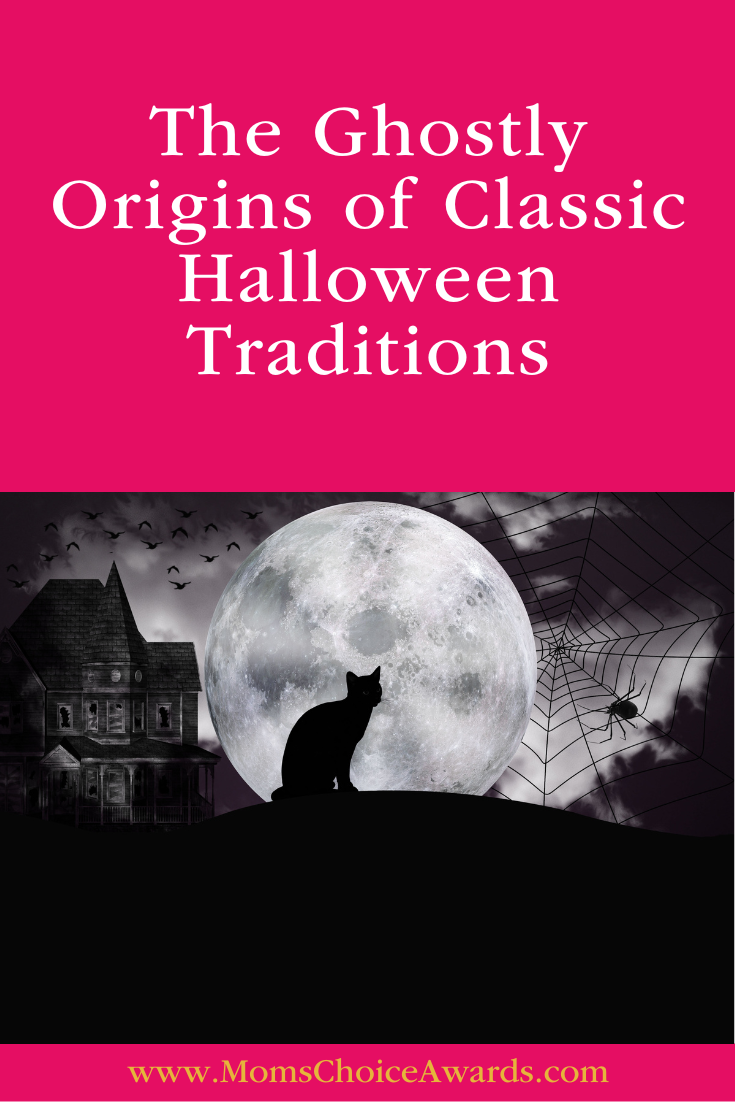 Another one of the most popular Halloween traditions, wearing costumes (particularly spooky ones) also began in Ireland. In order to avoid being scared and tormented by restless ghosts wandering the Earth, Celtic people began to wear scary costumes to disguise themselves as spooky spirits.
Another one of the most popular Halloween traditions, wearing costumes (particularly spooky ones) also began in Ireland. In order to avoid being scared and tormented by restless ghosts wandering the Earth, Celtic people began to wear scary costumes to disguise themselves as spooky spirits.
These disguises would keep away the evil ghosts haunting them and keep the people safe for another year. Nowadays, we no longer feel the need to blend in with the ghostly locals, and instead use Halloween costumes as a way of dressing up and showing our cute and creative spirit every year!
Going to Haunted Houses
While the origins of some Halloween traditions are more modern and recent, haunted houses actually go all the way back to the 19th century. The first haunted house was a series of attractions in London back in the early 1800s that depicted infamous French figures (such as Marie Antoinette and Louis XVI) as wax sculptures that had been decapitated.
Haunted houses as we know them (specifically those that are Halloween themed) didn’t start popping up until the Great Depression era. American parents and the working class needed a way to distract young pranksters who were known for causing destruction and vandalism during the Halloween season.
While haunted houses in the 1930s were mainly the decorated basements of people’s homes, haunted houses today have become a worldwide opportunity to create the most intricate mazes, horrifying characters, and scream-worthy experiences.
Watching Horror Films
One of the Halloween traditions that I’ve never fully been able to participate in because I am a giant scaredy cat is watching horror movies with my friends or in a theater. Horror stories have been around throughout history – ghost stories and folklore have been passed down from generation to generation for as long as people have been walking the Earth. But when did horror movies as a genre begin to appear?
The first horror films began to pop up in the 1890s, a few years after filmmakers emerged in the entertainment scene. “Le Manoir du Diable”, or “The Haunted Castle,” is widely believed to be the first horror film and was directed and created by famous filmmaker George Mellies. The movie was three minutes long and used supernatural elements to give audiences a wondrous (though not very spooky) experience.
Trick-or-Treating
Trick-or-treating is one of the many Halloween traditions that has so many versions and origins that it’s hard to pinpoint when it truly began. One version of trick-or-treating says it started with the Celtic people who would leave food out to appease the souls wandering the Earth at night.
Another theory is that trick-or-treating began with the Scottish custom of guising, which was started in the Middle Ages. Guisers, typically children and poor adults, would walk to local homes and ask for money or food in exchange for jokes, songs, or other performances.
The American system of trick-or-treating has its roots in the German-American belsnickling, where children in German-American communities would dress in costumes and visit their neighbors to see if the adults in the community could guess who they were dressed as. Sometimes, the young ghosts and ghouls were given treats if no one was able to guess their costume.
Eating Candy Corn
Probably one of my least favorite Halloween traditions (sorry to all the candy corn fans out there), this sweet treat began with a candy maker in Philadelphia who developed the famous triple-colored candy in the late 1800s. Back then, candy corn was known by the nickname “Chicken Feed” and could be purchased in boxes that promoted it as “Something worth crowing for.”
While it originally was just intended to be a popular fall treat, candy corn rose to fame as a Halloween staple in the U.S. during the 1950s.
Being Wary of Black Cats
Why are black cats such a staple as Halloween mascots? Well, the connection between black cats and the supernatural actually began back in the Middle Ages when many people saw these sweet creatures as a symbol of the Devil.
Then, centuries later when the witch hunts began, black cats continued to have a bad reputation because many of the accused women had cats of their own. It was around this time that the stories of cats as witches’ companions and familiars began to pop up and become popular.
Using Black and Orange Decorations
Like many other Halloween traditions on this list, the connection between the spooky holiday and the colors black and orange started with the Celtic people and their festival of Samhain. Originally, black was meant to symbolize the end or “death” of summer and orange represented the beginning of the fall harvest season.
Bobbing for Apples
One of the Halloween traditions that I haven’t seen around in recent years but used to be a wildly popular Halloween party activity is bobbing for apples. This event actually traces back to Roman courting rituals. During the Roman festival honoring the goddess Pomona (who governed agriculture), young men and women would participate in apple bobbing in order to foretell the relationships they would have in the future.
When the Romans took over the British Isles, the Pomona festival mixed with Samhain and brought apple bobbing to the precursor of Halloween.
Do you know of more Halloween traditions and their origins? Tell us in the comments!
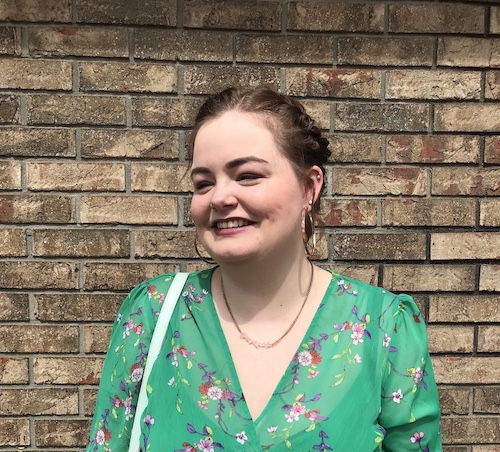 About Draven Jackson
About Draven Jackson
Draven is an avid writer and reader who enjoys sharing her opinions on movies, books, and music with the rest of the world. She will soon be working as a teacher in Japan and hopes to use her experience to connect with other teachers and students around the globe. Draven spends most of her time at home with her family, her dogs, and her ferret.
To see more, view all posts by Draven Jackson here.

